Hey there, nature lovers! If you’re yearning for a break from the hustle and bustle of city life, look no further than the breathtaking Great Sand Dunes National Park in Colorado. Imagine towering dunes reaching up to 750 feet high, situated against the stunning backdrop of the Sangre de Cristo Mountains. Whether you’re into hiking, sandboarding, or simply soaking in the serene landscape, this park has something magical for everyone. Let’s dive into the wonders of this unique destination and discover why it’s the perfect spot for your next outdoor adventure.
I remember our visit a few years ago in the fall—it was still quite hot, and the dunes sparkled under the intense sun. This time, our spring visit brought cooler, refreshing weather, highlighting the park’s versatility across seasons. The contrast made me appreciate its beauty even more, and I was glad we experienced it in a different light.
Read on for more information about the park and decide the best time to visit and experience the wonder of the dunes!

Welcome to Great Sand Dunes National Park
Great Sand Dunes National Park is a diverse ecosystem of dunes, grasslands, wetlands, and forests. The main attraction of the park is, of course, the dunes! Did you know the tallest dunes in North America are found at the park? The tallest is Star Dune, reaching up to 750 feet! The dunes were formed through wind, water, and sediment. On our first trip, we hiked to the top of High Dune, all 699 feet of it. This time we decided to explore other parts of the park.
Prairies and meadows surround the dunes with expansive grasslands, providing a home to wildflowers and a range of wildlife. The area supports pronghorn, mule deer, and a variety of bird species like the mountain plover and horned lark.
Medano Creek, a seasonal stream that flows at the base of the dunes, provides a unique habitat in an otherwise arid region. The creek enters the dunes from the mountains and is fed by snowmelt. The typical peak is in late May or early June. The flow is shallow, usually only a few inches deep, but provides a great spot to cool off in the early summer for the kiddos.
In addition to entertainment, these wetlands attract amphibians, insects, and migratory birds, making it a hotspot for birdwatchers. We drove the Medano Pass Primitive Road to the aptly named Point of No Return and then hiked another mile or so to the Sand Pit. I made my way down to see the creek flowing through the dunes.

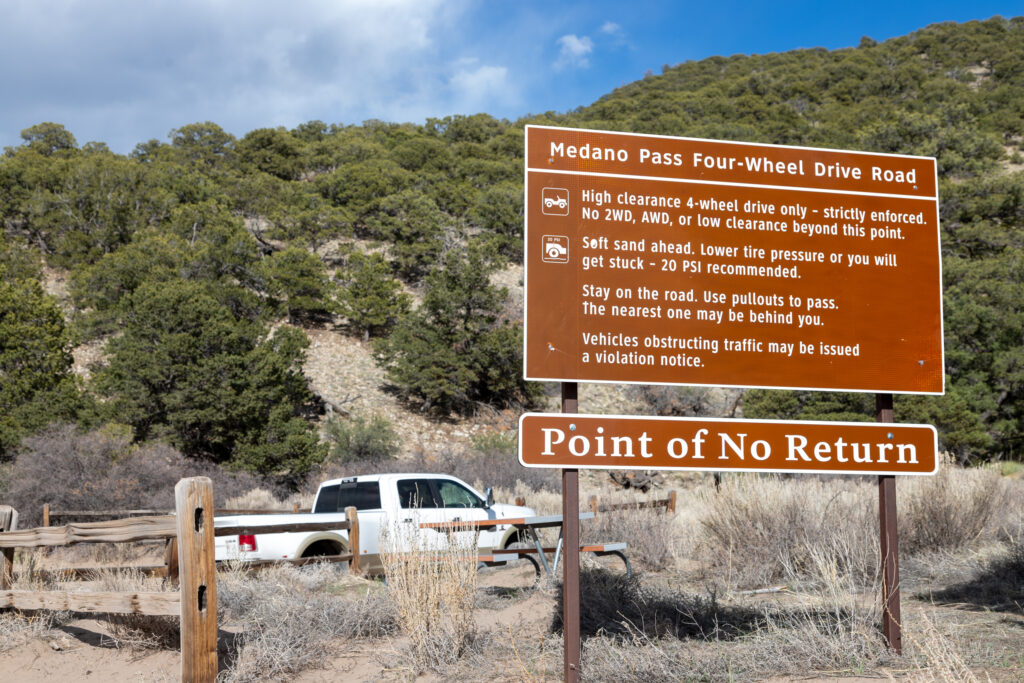


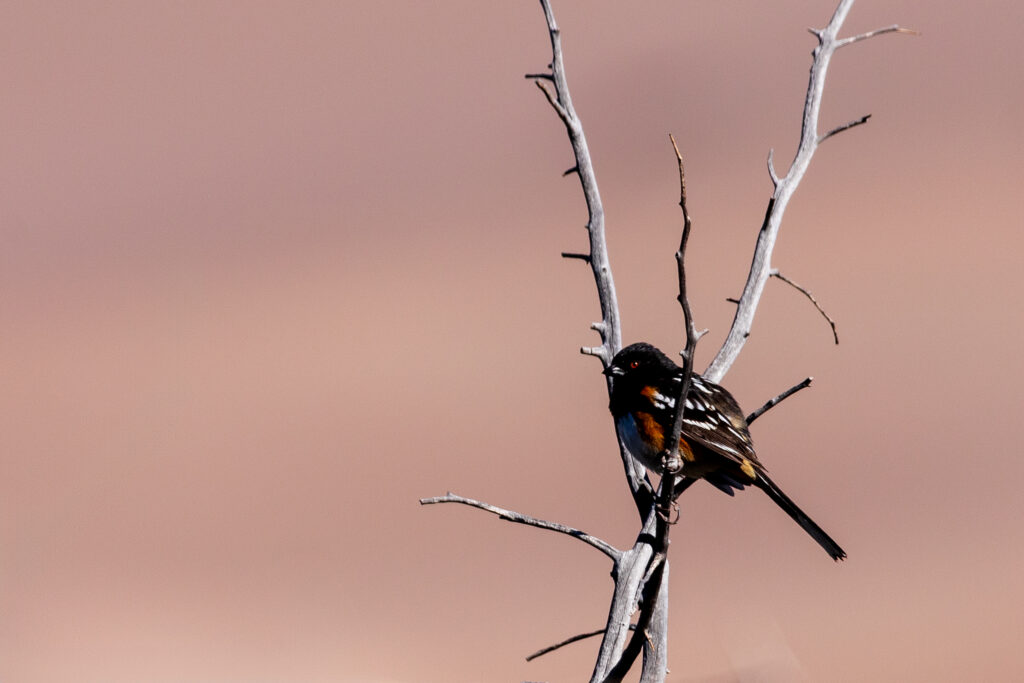
On the lower slopes of the mountains, where the forests offer a cooler, shaded retreat, pinyon pines and junipers thrive. The air here carries the fresh scent of pine, and bird calls echo through the trees. Black bears forage for berries in these shaded retreats, while bobcats stealthily hunt among the underbrush.
Alpine Tundra is found at higher elevations, above the tree line, and hosts a variety of plants and animals adapted to the cold. During the short summer seasons, majestic bighorn sheep and elusive pika can be spotted among vibrant, colorful wildflowers.

Best Time to Visit
GSNP is open year-round with some seasonal considerations. The main park areas, including the dunes, are open 24/7 with no reservations or timed entries required. We went in late April and the temps were perfect for exploring and hiking the dunes. The snow-covered mountain tops added to the beautiful landscape.
No matter the time of year you visit there will be views to amaze and experiences to be had. Spring offers cooler temps and snow-capped mountains. Summer brings warmer temps and Medano Creek to dip your toes in. Fall and winter bring snow to the park along with new adventures like cross-country skiing and winter hiking on the snow-packed trails.
Top Activities
Sandboarding and sand sledding are unique and exhilarating activities that are very popular on the dunes. Although the park does not rent the boards, you can easily find rentals nearby. For your convenience, check out the Oasis Store, located about 4 miles from the park, or Spin Drift Sand Board Rentals in nearby Blanca, CO. Remember to rent your gear before you arrive to make the most of your adventure!
Here are some helpful tips if you want to save the cost and bring your equipment:
- Sandboards and sand sleds are specifically made for sand, featuring a special design with extra slick base material and special wax. These work best for sliding in most conditions.
- Snow sleds, snowboards, and skis only slide on wet sand after rain or snow. The sand surface is usually dry.
- Cardboard, saucers, and soft plastic items don’t slide on sand; they will dig into or drag on the sand.
- Rectangles of rigid, ultra-slick plastic or masonite might slide, but are unsafe: there is no way to control or steer them, and their angled edges could cause injuries.
There are several hiking trails to explore in the park, each offering its unique charm. For a heart-pumping adventure, try trekking up one of the dunes. I explored the Dunes Overlook Trail and Montville Nature Trail—both were easy hikes with fantastic views. I haven’t hiked Mosca Pass Trail yet but hopefully, I will get the chance on our next trip. It is a more challenging hike. This 3.5-mile trail (one way) will take you to the summit of a low pass in the Sangre de Cristo mountains, promising even more breathtaking scenery. Make sure to bring plenty of water and take breaks to fully enjoy the stunning landscapes.
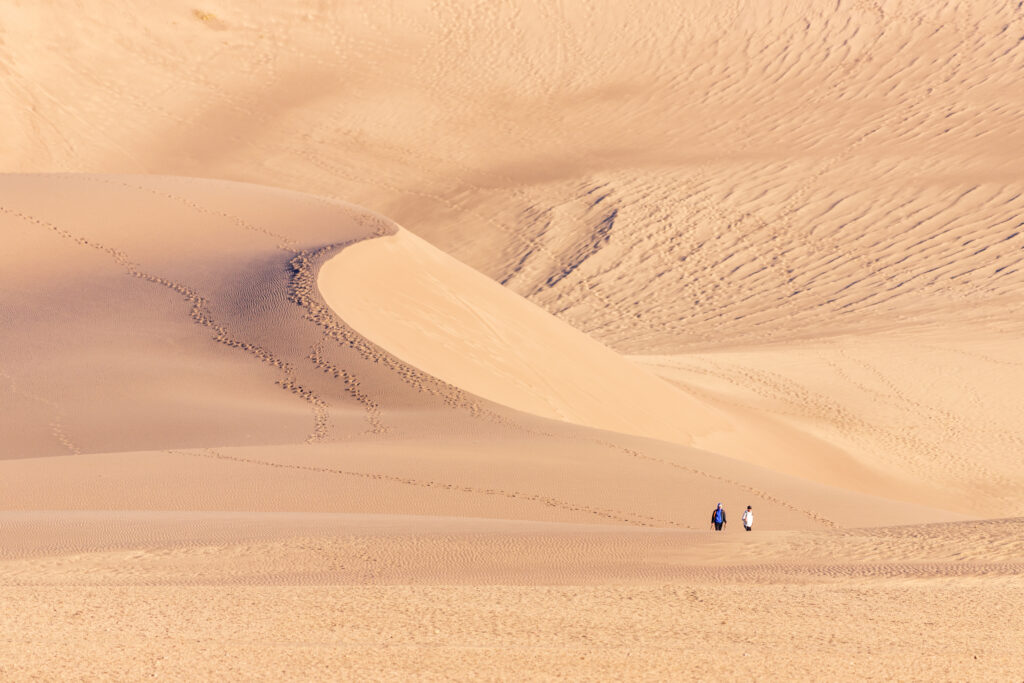


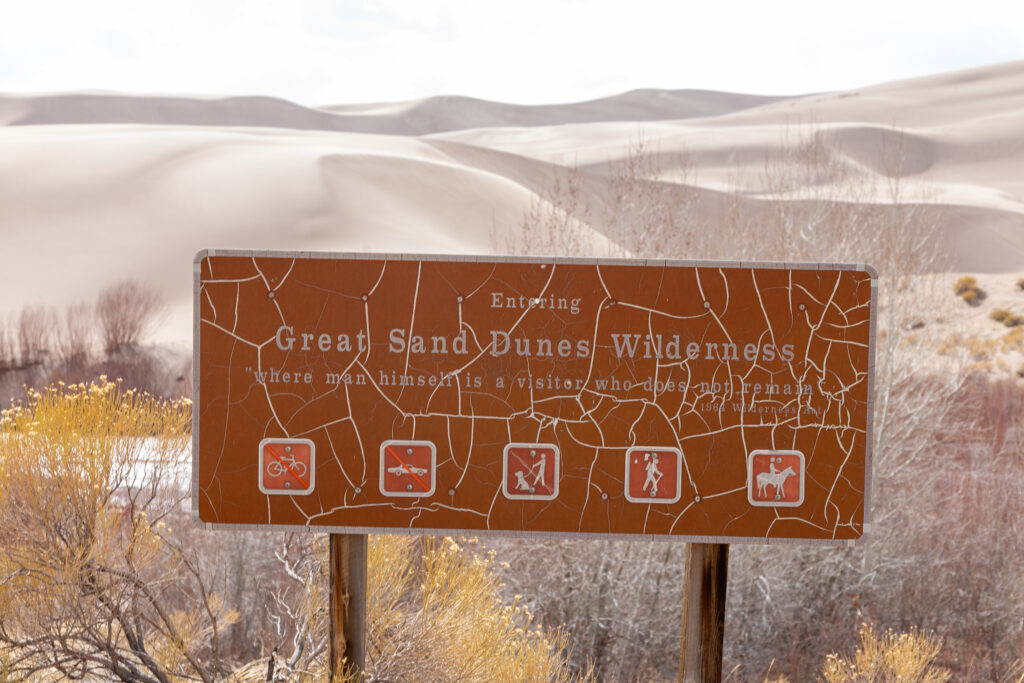

If, like me, you are a photographer who loves the night sky, this park has a lot to offer. Stargazing at GSNP is an incredible experience, with the majestic night sky set against the backdrop of the sand dunes. Designated as an International Dark Sky Park, it provides perfect conditions for both stargazing and night photography. The clear, unpolluted skies reveal a stunning array of stars and celestial bodies. Just remember to check the weather before heading out to ensure clear skies to capture the beauty of the night.
Photography Tips
There is a reason why photographers prefer shooting at golden hour—the light is magical! Head to the park to catch the sunrise, and you will be rewarded with rich colors spreading across the dune-filled landscape. There are fewer people to dodge, although sometimes they make good subjects! I took advantage of the early morning hikers returning to the parking lot to give context to the massive size of the dunes.
The contrast between the dunes and the mountains became my muse. I spent many hours watching the light change and capturing some of my favorite shots from the park. The interplay of shadows and highlights created mesmerizing patterns on the sand.
Another favorite was getting closeups of the dunes. I loved the lines, shadows, and texture of the sand. These elements combined to create some striking minimalist images. If you’re a photographer, don’t miss the chance to explore these unique perspectives!

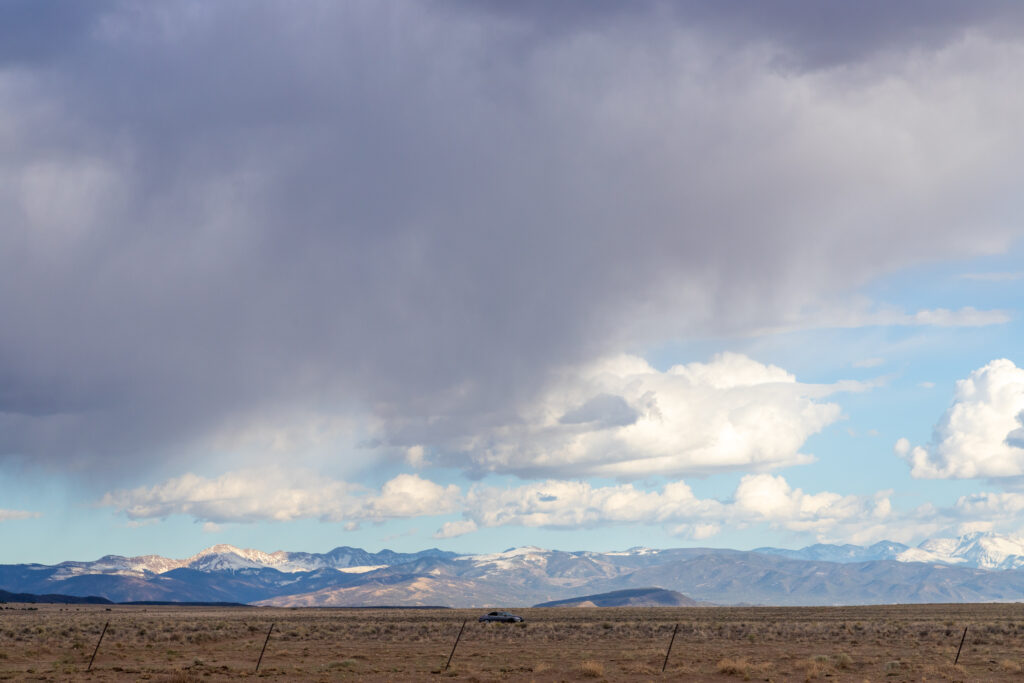
Camping and Accommodations
If camping inside the park is your jam, check out Pinon Flats Campground. Reservations are required through recreation.gov or by calling 1-877-444-6777. The campground is open from April 1 to October 30. Restrooms are available, but no showers or water/sewer hookups.
For those seeking peace and quiet, the nearby public lands are a great option. About 10 miles outside the park, you’ll find plenty of space for large and small RVs. The views are incredible! We’ve camped in the area a couple of times and really enjoyed it. Although there are no facilities or hookups, it’s free!
If you prefer full hookups, there are multiple campgrounds nearby. Alamosa KOA and Base Camp Family Campground are close to Alamosa with shopping and dining options.
Cultural and Historical Insights
The Great Sand Dunes hold deep cultural significance for several Native American tribes, including the Navajo, Apache, and Ute. These tribes consider the dunes sacred, believing them to be a spiritual place with strong ancestral connections. The dunes feature numerous legends and are often seen as a site for spiritual ceremonies and rituals.
The geological history of the park and how the dunes were formed is impressive. The short story is that millions of years ago shifting tectonic plates created the Sangre de Cristo Mountains. Volcanic activity created the San Juan Mountains. The San Luis Valley between them is roughly the size of Connecticut and provides the perfect spot for wind, water, and sediment to create the sand for the dunes. This is my simple understanding of the process so please check out the NPS website for more detailed information!

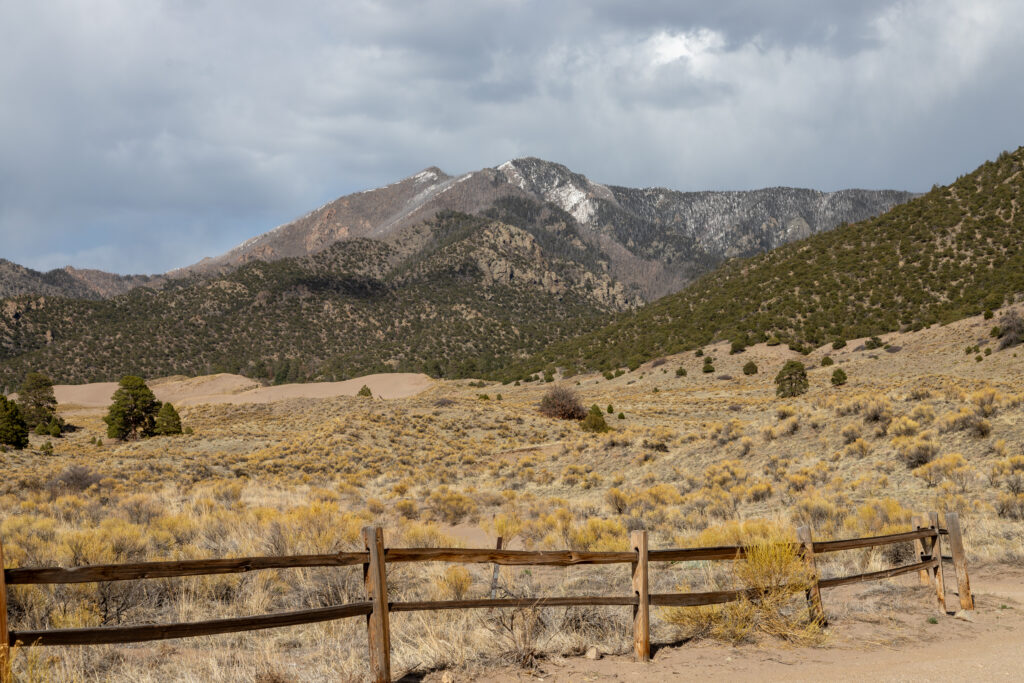


Tips to Enjoy a
Day at the Park
Essentials like plenty of water, sunscreen, and sturdy shoes are recommended for a visit to the park. If climbing the dunes is on your list, you will want something to keep your feet from burning in the summer. I recommend close-toed shoes, so the sand doesn’t make blisters as you climb. I climbed High Dune in my hiking boots, which worked out great.
The park is fairly accessible, but the dunes can be a tough climb so it’s important to know your abilities. Handicap parking can be found at the Visitor’s Center, Pinon campground, and even along the primitive road to Medano Creek.
Closing
Are you ready to experience the magic of the Great Sand Dunes National Park for yourself? Plan your visit today and discover the adventure waiting for you. Whether you’re looking to hike the dunes, try sandboarding, or simply relax and enjoy the breathtaking scenery, there’s something for everyone. Don’t wait—pack your bags, grab your camera, and get ready for an unforgettable journey into one of Colorado’s most unique natural wonders!





